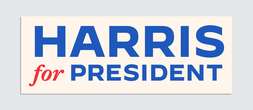Job hunting has never been easy, but as the workforce grows more complex, interview mishaps are increasing. While most people have surely heard one or two surprising stories from a friend or family member, a new series of viral, satirical TikToks is shedding new light on the extent of frustration and interview fatigue they experience.
From virtual calls with distracted interviewers at the beach to in-person meetings that unexpectedly stretch out for hours due to unannounced guests, job seekers are now sharing their too-crazy-to-be-true interview experiences. Their comments suggest this is the unfortunate reality for many candidates in today’s evolving job market.
It’s no surprise then that frustration—or interview fatigue— among job seekers is on the rise, and this is something leaders should be concerned about. Amidst global talent shortages, hiring managers cannot afford to become fodder for applicant eye-rolls or the next viral TikTok. Instead, they need to strengthen their hiring process to be more open, efficient, and candidate-friendly—immediately addressing shortcomings while preparing for the future to attract the best possible talent.
A company’s employment brand is a critical facet of its recruiting and retention strategy, which is why addressing interview fatigue outright is massively important to business success. Here’s how companies can create hiring processes that simultaneously benefit the candidate experience while remaining as efficient as possible:
Invest in more effective interview training for hiring managers
A report by Greenhouse found one in three workers consider well-prepared interviewers a key part of a positive candidate experience. Yet, far too often, employees are asked to participate in interviews without any proper training on how to effectively (and professionally) conduct these conversations.
This results in job candidates hearing inconsistent stories about a company or being asked the same question by different interviewers. Companies should make their candidates feel like they’re moving forward during the interview process, rather than feeling like they’re being taken on multiple first dates.
In the same way organizations invest in skill or managerial training, they ought to do the same for effective interviewing. A company’s interviewers are the face of the organization and key to bringing on strong talent. Interviewers should be prepped with guidelines and talking points so the company’s mission shines through in their conversations, especially important in virtual environments, which avoids hiccups and keeps experiences with your company from becoming the next viral TikTok.
Be transparent on the interview length and process
The recruitment process often feels like a battle against time. Companies are fighting to fill talent gaps and candidates are hopeful to secure their roles quickly. Both are juggling other interview processes and priorities. With this in mind, respect both your own and your candidate’s time by being transparent about how many rounds of interviews they can expect.
This means limiting interview rounds to what’s necessary. While there’s no magic number, Google’s “Rule of Four” —based on a study that found four rounds of interviews give hiring managers 86% confidence in their candidate choice—is a popular approach. Each round and conversation should be strategic, aiming for a discovery about the candidate. This can also help cut down on the average time-to-hire, currently estimated to be 36 days, securing top talent faster and cutting down on recruiting costs.
Prioritize open communication and feedback with candidates
Stability is the top reason workers choose to stay in their current roles, according to a recent Adecco Group survey of 30,000 global workers. To convince these workers to jump from a stable role and consider a new opportunity, companies must offer an open, transparent hiring process that provides enough information to properly evaluate the position. This includes a detailed list of job responsibilities, insight into in-office and remote work requirements, and clearly stating benefits and salary range.
This approach extends to hiring as well. Providing applicants with feedback and regular updates on their candidacy status demonstrates respect—yet many overlook it in favor of other priorities. While nearly every job candidate (91%) in a recent survey said they’d like to receive feedback, regardless of whether or not they got the job, separate research found that 40% of job seekers said an employer had ghosted them after a second- or third-round interview last year. Constructive feedback not only provides candidates a chance for future growth but also strengthens the company brand and builds goodwill.
Keeping the human touch in hiring
Modern hiring practices cannot be improved without considering the rising influence of AI. While new technologies have revolutionized hiring for managers and recruiters alike, they’ve also depersonalized the experience for candidates and risk biases that can negatively impact diverse candidates.
As organizations inevitably integrate AI into hiring, they must do so carefully and with tremendous human oversight. From revising résumé-scanning algorithms to being more inclusive to ensure applicants meet with a human interviewer as early in the interview process, leaders must invest in keeping humans the guiding force behind hiring processes and decisions.
The competition for skilled workers remains strong and will only become fiercer as the workforce shrinks. Leaders who prioritize building a steady talent pipeline—starting with a recruitment process that accounts for interview fatigue—will emerge as more innovative, productive, and ultimately, more likely to see long-term success.









No comments